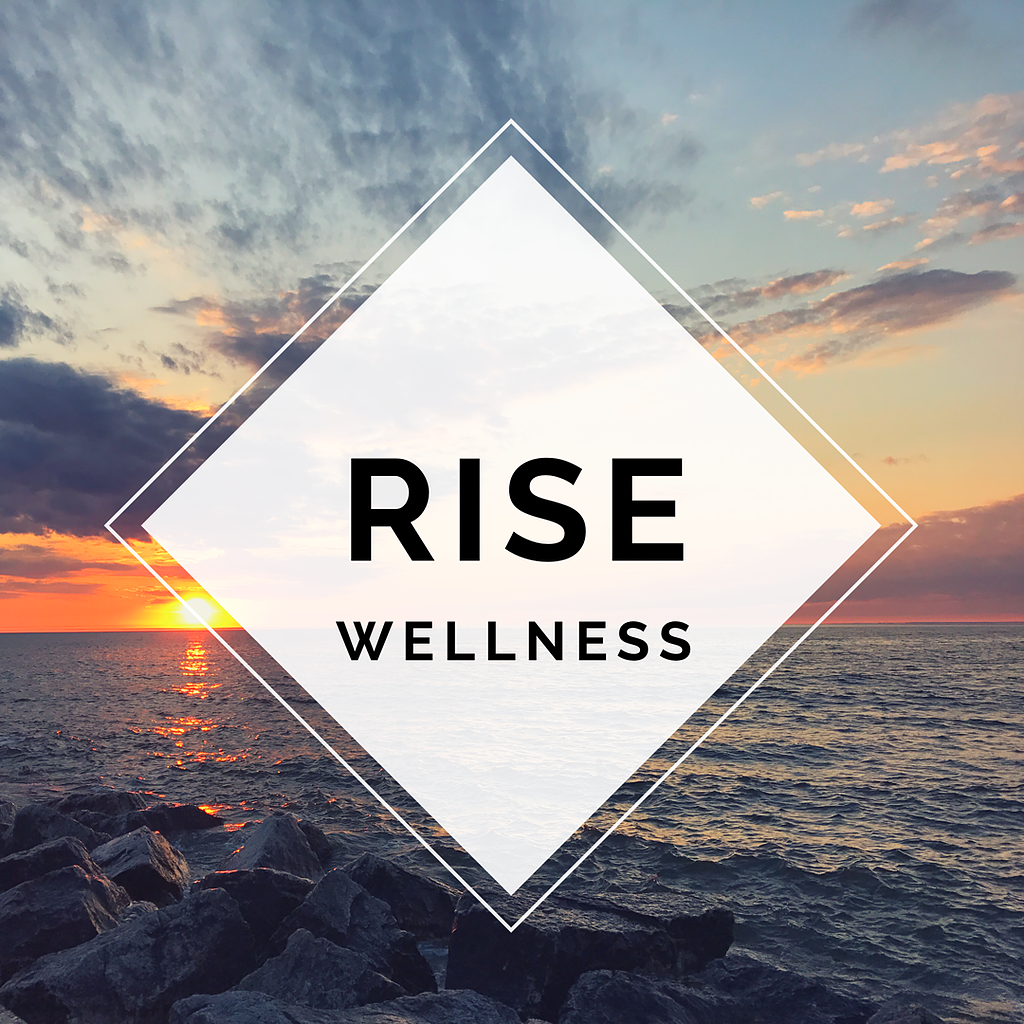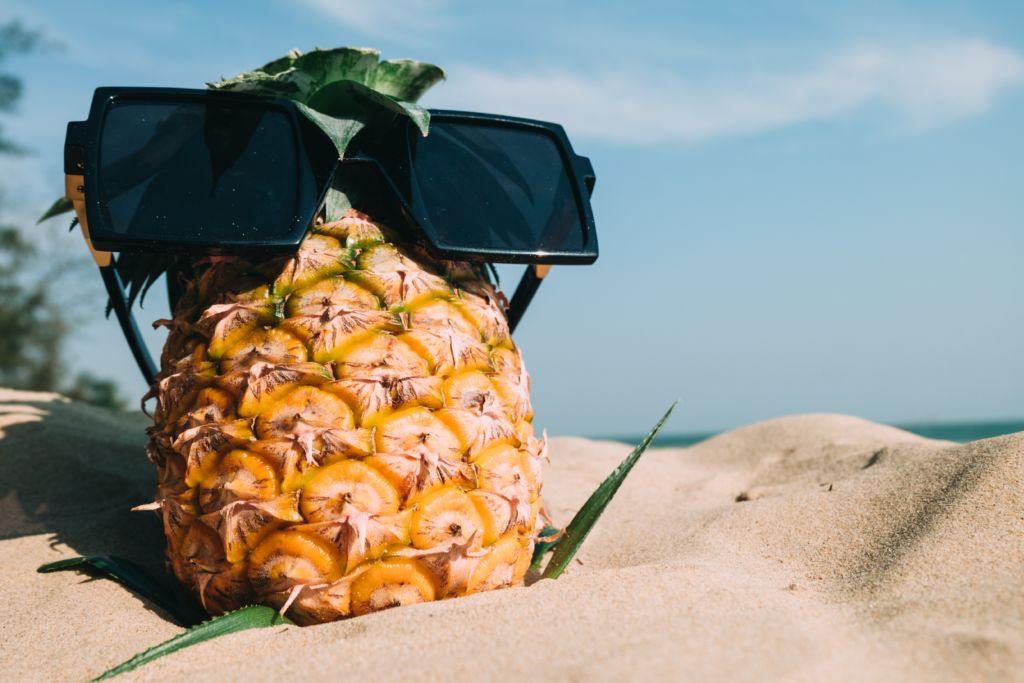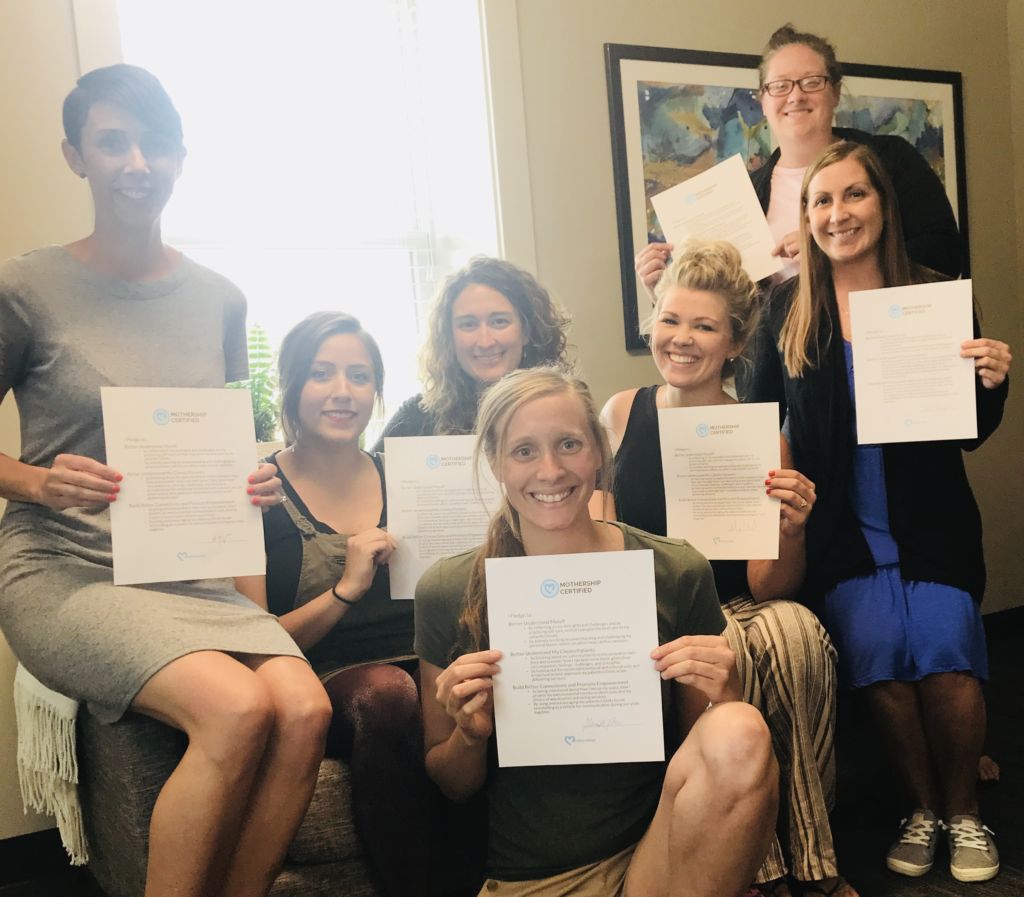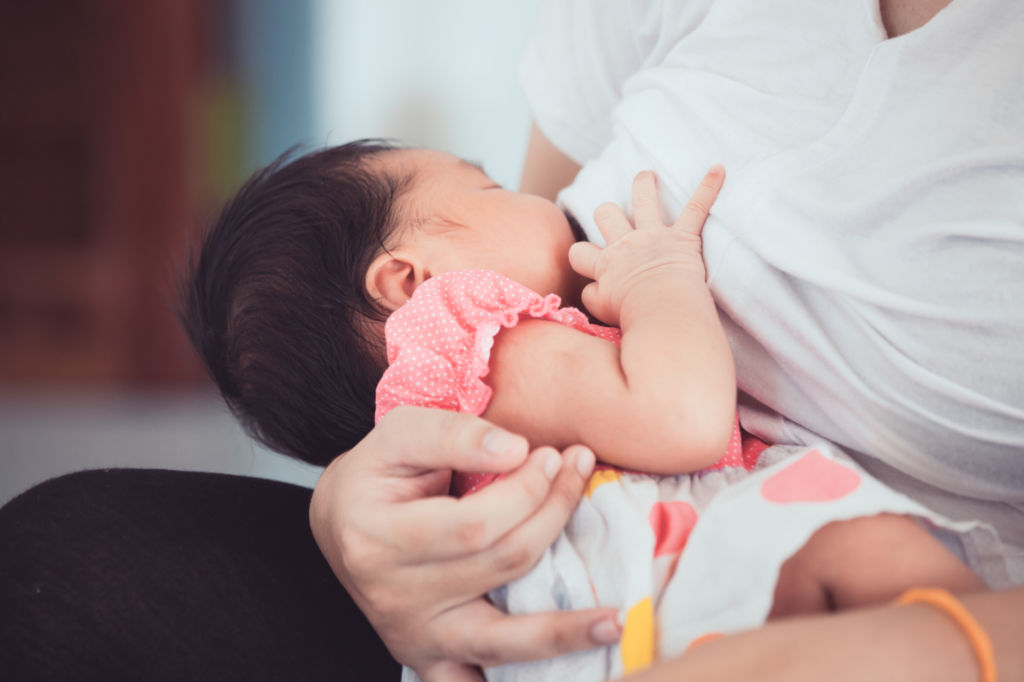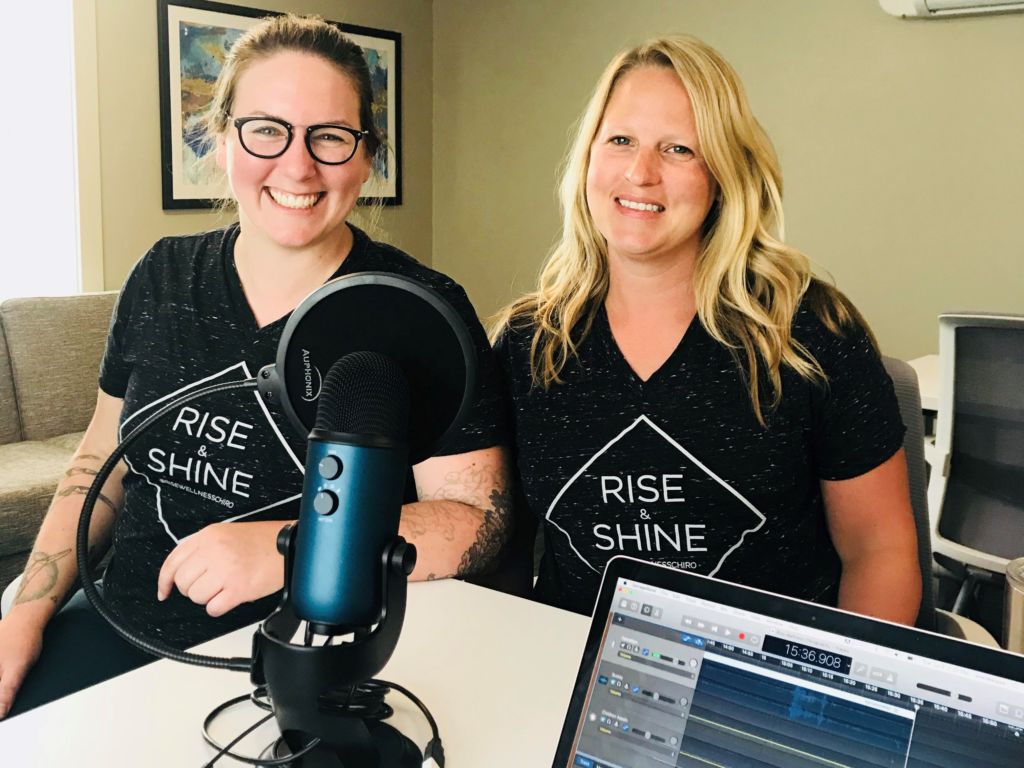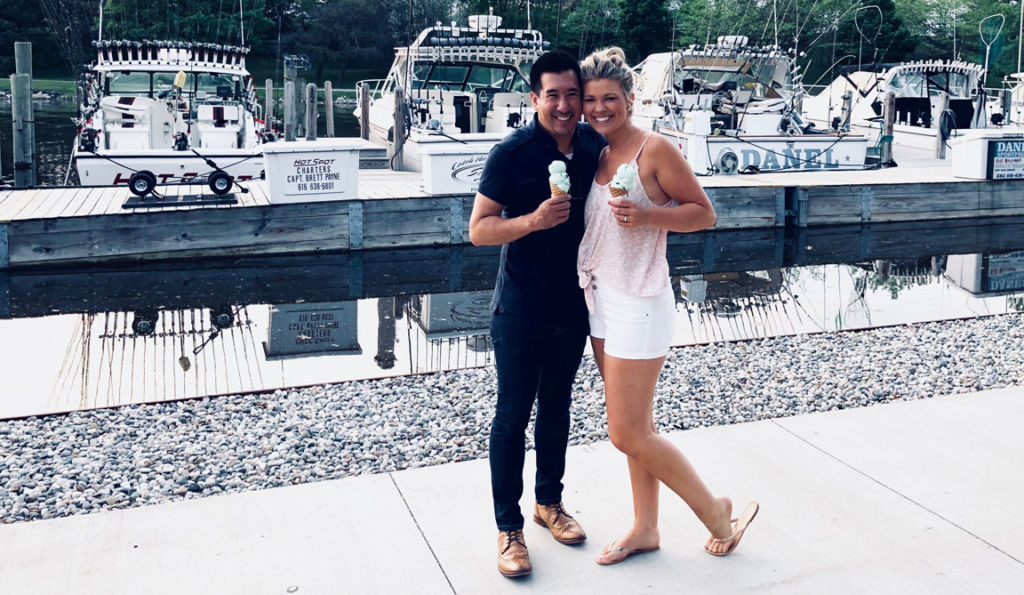Podcast Episode #34: Chiropractic Care During Pregnancy
Today we talk to Dr. Annie of Rise Wellness about what chiropractic care looks like during pregnancy. You can listen to this complete podcast episode on iTunes or Soundcloud.
Alyssa: Hi, welcome to another episode of Ask the Doulas. I am Alyssa, co-owner and postpartum doula at Gold Coast. Today, we have Dr. Annie with us. She is a local chiropractor, and many of our clients have seen her. Hello!
Dr. Annie: Hello!
Alyssa: So we get a lot of questions about what a chiropractor actually does during pregnancy. How do you support women, and why should they go see you when they’re pregnant?
Dr. Annie: Yeah, so chiropractic philosophy is kind of based on the premise that life expresses intelligence and that normal physiology knows exactly what it’s doing. And this is probably the most prevalent in pregnancy or the most seen in pregnancy because we see this baby developing within this woman, and –
Alyssa: It just happens.
Dr. Annie: It just happens. It’s an amazing thing, and I think a lot of times today that the beauty of that process kind of gets taken away. So that’s something great about chiropractic is that we honor the system of the body, and we honor the mother. And we just try to make sure that they’re communicating, brain and body, and everything’s developing properly the way that it’s supposed to.
Alyssa: So for someone who understands chiropractic care and has maybe seen a chiropractor, does anything change when you’re pregnant? I know there’s different things happening in your body as a woman who’s pregnant, but does the care change?
Dr. Annie: Yes, the care does change. So for one thing, the chiropractor is still going to address your nervous system and make sure that your spine and everything is in good alignment, but because of some of the biomechanical changes that are occurring during pregnancy, the woman has a lot more relaxin, which is a hormone that’s secreted during pregnancy that allows ligament laxity. So that is in preparation for labor, for stretching of the pelvis and everything. So the way the chiropractor would address this issue is they’re going to focus more on the pelvis and the bony alignment of the pelvis, where the sacrum is in relation to pelvic bones, and make sure that there isn’t any twisting there because that can cause muscle imbalances. And the uterus is also attached and tethered to the bony pelvis, so if there is any kind of misalignment in the pelvis, then the chiropractor needs to address that because that tethering to the uterus can cause some constraint in the uterus, as well. So we want to make sure that everything is lined up. And then the nervous system runs through all of those bones, so we want to make sure that if all of those bones are aligned, that the nervous system is communicating the way that it’s supposed to so everything can develop correctly.
Alyssa: And did I hear that you are now the only Webster-certified chiropractor?
Dr. Annie: I’m not the only Webster-certified in Grand Rapids, but I am now Webster-certified. But I will be, I think, the only one within the city of Grand Rapids fully certified for pediatric and pregnancy care. So I’ve done all of the ICPA courses. I have a three-month exam that I need to take in order to be fully certified, but I’m working on it.
Alyssa: So what does that mean to me, having no idea what Webster-certified means? And you said you’re also certified for pediatric and pregnancy – there’s two different certifications?
Dr. Annie: No, Webster is a technique and analysis of the pelvis, and it’s actually applicable to any gender, any age, but it’s used most in pregnant women to balance the pelvis and make sure that there is enough room for the baby to come through. The Webster certification is done through the ICPA, which is International Chiropractic Pediatric Association, so that is a one-module course that chiropractors can take. They go down for the weekend, learn all about the adjusting technique and the analysis and everything, and then get tested on it there and then become Webster-certified. The full certification process for pediatrics, also through the ICPA, is 14 modules, 2 research projects, and then a big exam at the end.
Alyssa: Okay, so it’s kind of like, in my world, the difference between a CLC, which is a certified lactation consultant, and an IBCLC, which an International Board-Certified. It’s a lot more work, a lot more extensive. You both know what you’re talking about, but one has just tons of hours and hours and hours put into this certification.
Dr. Annie: Exactly, and the full certification covers not only Webster technique, but it covers chiropractic research in pregnancy and pediatrics; it covers nutrition; neurology. So it’s a lot of intensive information about specific pediatric care; how to adjust babies; how to analyze babies; because we don’t want to treat them like they’re little adults and adjust them the same way that we would an adult. We want to be able to recognize things because they’re going through growth milestones. We want to be able to analyze, especially for a newborn, since they can’t communicate where certain things are or where they’re having symptoms. We need to be able to analyze their spine in a different way and in a unique way and be able to adjust it.
Alyssa: So that’s something your certification would include, but not the weekend one?
Dr. Annie: Right. The Webster technique is primarily for adults, but it’s really good for pregnant women, like I said. So it is adjusting the pelvis and then working with some of the ligaments in order to facilitate the growth of the baby.
Alyssa: So I think a lot of people when they hear Webster think that chiropractors who practice Webster turn babies. True or not true?
Dr. Annie: I would say not true. So turning babies isn’t really what the premise behind Webster technique is for. Like I said, it’s about balancing the pelvis, making sure everything’s in correct alignment. Some of the benefits of that, though, are – let me back up a little bit. So Williams Obstetrics talks about dystocia, which is difficulty during labor. There’s three primary causes of difficulty during labor. One is power; one is passage, and one is passenger. So the power has to do with how well your uterus can contract during labor. So neurologically, having chiropractic to make sure everything is in line will help the neurology work there so that the uterus can contact and coordinate its contractions appropriately. With passage, that’s the bony pelvis; that’s what we’re talking about, so that’s the pelvic outlet; that’s where the baby’s going to come through. So we want to make sure everything’s in line there. And then passenger: the baby needs to be in a good position for everything to go smoothly so there’s no difficulties during labor. So what Webster technique is focused on is making sure that those first two things are working appropriately, and then the baby, if it has enough room within the uterus and within the bony pelvis, if everything’s lined up, then most of the time, they can turn on their own. They innately know what position they’re supposed to be in, so as long as there’s no interference to that system, then they should be able to turn themselves.
Alyssa: I love that, the passenger. That’s really fun. So it’s really not about turning babies; it’s making – if everything else is lined up properly, the baby just knows inherently to do it on its own?
Dr. Annie: Exactly, yeah. It’s all about optimizing position and then the mom’s body and getting it ready for labor.
Alyssa: So do you have stats on the passenger – like if a mother is seeing a Webster-certified chiropractor and maybe wants you to turn her baby, how often does it actually work?
Dr. Annie: Well, there’s a couple of studies that have been done by the ICPA. One in 2012 had 81 pregnant patients with mispositioned babies. So they were testing it, just adjusting the pelvis, focusing on that, and 70% of the babies turned to the correct position after Webster care, which is pretty awesome. I found another study that was in 2007 where they studies 102 moms, and 92% of them turned on their own with Webster care, which is really awesome. They say that 9% will spontaneously turn anyway without any sort of care or intervention because the baby is supposed to be in the head-down position.
Alyssa: That’s a pretty small percent, though. If you’re nearing your due date and your baby is flipped, you have a 9% chance; that’s it?
Dr. Annie: Exactly. There’s a lot of C-sections that happen because of breech babies, which is kind of – I don’t want to say it’s unnecessary trauma, but if there’s something that you can do to prevent having surgery, then that is a pretty good chance.
Alyssa: Yeah, 92% is really good. So what else do we need to know about Webster-certified care that maybe most parents don’t know about?
Dr. Annie: It’s safe. It’s safe as long as you have a good, healthy pregnancy. There are some contraindications to having Webster care. And some of those things are modifiable, too, so Webster itself is kind of like a traditional chiropractic adjustment, but there are some modifications that you can do to make it a lot easier for the mom, as well. So if there are any contraindications like preeclampsia, placenta previa, things like that, bleeding during pregnancy and stuff, those are all contraindications because we just want Mom to be in the healthiest position. So if Mom isn’t having a healthy pregnancy, then we don’t want to go in and intervene with anything like that because we just want her to be as healthy as possible and make sure that the baby is healthy, too. But that being said, there are modifications and gentler things that we can do, as well. Not to say that Webster’s not gentle, but it is making sure that those bones are aligned in the pelvis.
Alyssa: So is it more of the cracking technique versus –
Dr. Annie: Some of it is utilizing the drop in the table, too, which can be a little abrupt. We always say the baby’s going to hear this, probably, because it’s a loud sound, but it’s not going to hurt the baby at all, which I think is important for mothers to realize, too. But we do modify a lot of things, like we use the activator technique in our practice.
Alyssa: Which is very gentle?
Dr. Annie: Yeah, very, very gentle, too, but it gets the same job done.
Alyssa: Cool. Well, I think that explains it really well. I think we will have you on again to talk about chiropractic care for babies. I think that would be a good topic.
Dr. Annie: I would love that.
Alyssa: Tell us where people can find Rise Wellness.
Dr. Annie: So you can find us online at www.risewellnesschiro.com, or we’re also on Facebook and Instagram, and both those are @risewellnesschiro.
Alyssa: Thank you so much.
Dr. Annie: Thank you.
Alyssa: And you can always contact us at goldcoastdoulas.com. Email us at info@goldcoastdoulas.com. Find us on Facebook, Instagram, and of course, iTunes. Talk to you next time.
Podcast Episode #34: Chiropractic Care During Pregnancy Read More »


